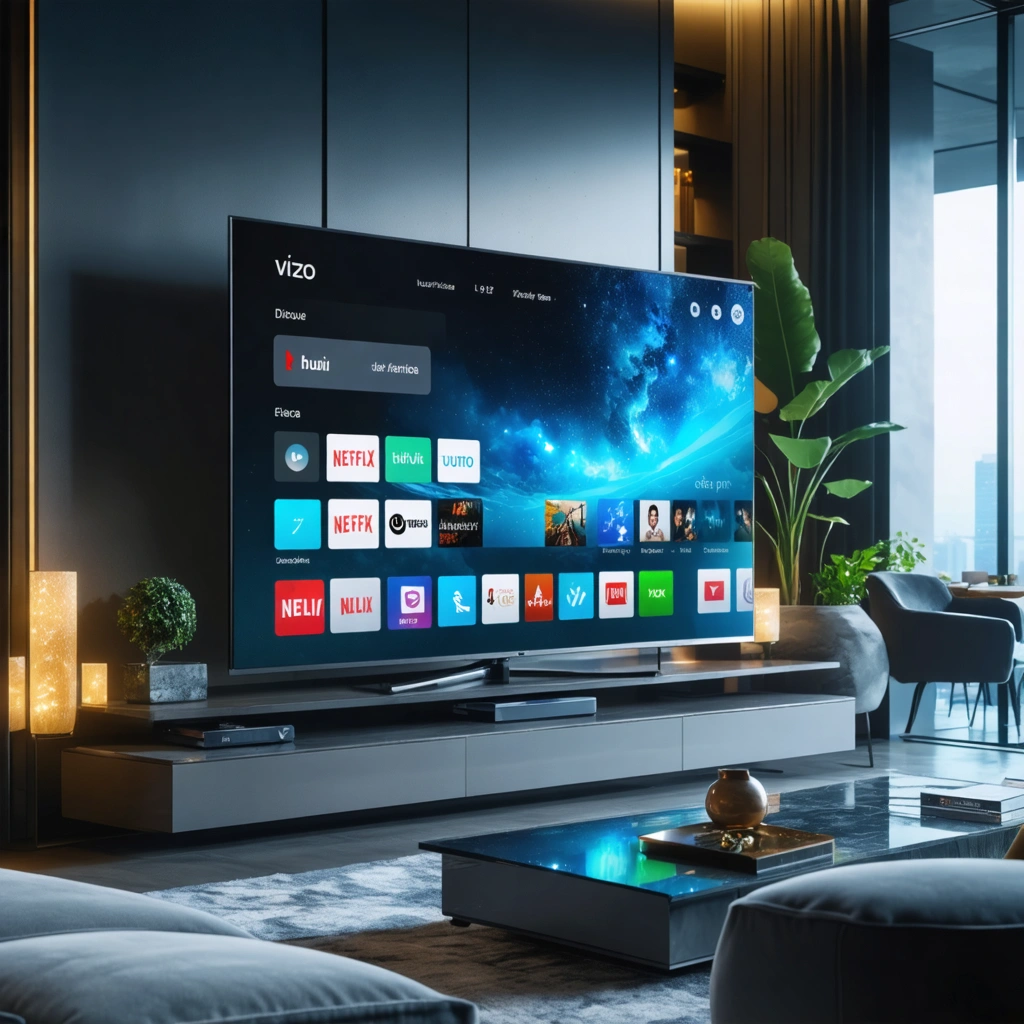When Speed Meets Expectation: The Curious Case of Vizio TVs
Have you ever wondered why is Vizio TV so slow? You’re not alone. For many users, the promise of a smart TV that seamlessly streams, loads apps instantly, and responds with lightning speed turns into a frustrating experience marked by lag, sluggish menus, and those infamous buffering circles. This isn’t just a minor hiccup—it’s a symptom of a broader story about how technology meets the marketplace, and where expectations collide with reality.
Vizio, a brand once celebrated for delivering affordable, quality TVs, now finds itself grappling with a critical crossroads. Despite its strong foothold in the market and a growing Vizio revenue stream, many customers complain about Vizio smart TV issues that slow down their viewing pleasure. What’s behind this seeming disconnect? How do these performance woes reflect deeper challenges in Vizio marketing and branding? And importantly, what can be done to realign the brand’s tech promise with the consumer experience?
The Slow Lane: Understanding Vizio’s Performance Challenges
Let’s start with the everyday reality for many Vizio owners. You power on the TV expecting quick access to Netflix or Hulu, but instead, you wait. Menus take their sweet time loading, apps freeze, and navigating between settings feels like a test of patience. It’s a paradox: Vizio’s smart TVs boast impressive specs on paper, yet the actual user experience often falls short.
This raises the immediate question: why is Vizio TV so slow? The answer lies at the intersection of hardware limitations, software optimization, and the delicate balancing act of cost versus performance. Vizio's strategy to hit a competitive price point means that some components may not match the speed and power found in higher-end models from other brands. Meanwhile, the proprietary smart TV platform, designed to keep the experience unified across devices, sometimes struggles with sluggish updates and app compatibility.
These technical factors feed directly into the brand’s image and customer satisfaction. Every delayed response or frozen app becomes a missed opportunity for Vizio to build loyalty and trust. And yet, despite these hurdles, the company’s Vizio revenue has shown resilience, fueled by aggressive pricing and widespread availability. This paradox reveals the nuanced challenge: Vizio’s marketing must not only attract customers but also manage expectations about the technology’s limitations.
Marketing’s Tightrope: Promises vs. Reality
Vizio’s approach to marketing has often focused on affordability and value, with Vizio campaigns highlighting features like 4K resolution, smart capabilities, and sleek designs. These campaigns successfully pull in budget-conscious buyers eager for the latest tech without a premium price tag. But here’s the catch: the marketing narrative sometimes glosses over the speed and responsiveness issues users encounter.
Imagine the frustration of a consumer who buys a Vizio smart TV based on glossy ads promising a “seamless streaming experience,” only to face Vizio smart TV issues that make basic navigation a chore. This gap between expectation and experience isn’t just a hiccup—it’s a branding challenge that can erode trust over time. The brand’s marketing teams need to strike a delicate balance between showcasing compelling features and setting realistic expectations.
- Transparency: Honest communication about performance limitations could build goodwill.
- Focus on strengths: Highlighting picture quality and affordability while acknowledging speed considerations.
- Customer education: Providing tips and support to optimize TV performance.
Failing to address these nuances risks alienating the very customers Vizio needs to retain in a fiercely competitive market.
Bridging the Gap: What’s Next for Vizio?
So, where does that leave Vizio? The company’s journey is emblematic of a larger challenge in tech marketing: aligning a product’s capabilities with the brand promise in a way that resonates authentically with consumers. Addressing why is Vizio TV so slow isn’t just about upgrading hardware or patching software glitches—it’s about recalibrating the entire customer journey.
Improvements in Vizio’s operating system, more robust hardware options, and better quality control can directly enhance user experience. But equally important is evolving Vizio marketing strategies to embrace transparency and customer-centric messaging. After all, informed customers who understand what to expect are less likely to feel disappointed and more likely to become loyal advocates.
In the sections ahead, we’ll dig deeper into the technical roots of these performance issues, analyze Vizio’s marketing approaches through the lens of consumer psychology, and explore how the brand can turn these challenges into opportunities for growth and innovation. Whether you’re a Vizio owner frustrated by slow menus or a tech enthusiast curious about the intersection of marketing and technology, this exploration will shed light on the forces shaping your viewing experience.
Stay tuned—there’s more behind the screen than you might expect.

Why Vizio TVs Are Slow: Exploring Tech Marketing Challenges and Brand Impact
Many consumers searching for why is Vizio TV so slow are frustrated by sluggish performance, slow app loading times, and lagging interfaces. This issue not only affects user experience but also highlights deeper challenges faced by Vizio in both technology execution and marketing strategies. Understanding these challenges requires examining the technical causes, the company’s positioning in the smart TV market, and how Vizio marketing and Vizio campaigns address—or sometimes fail to address—these concerns.
Technical Reasons Behind Vizio TV Slowness
Many Vizio smart TV users report performance issues such as delayed response times, slow boot-up, and sluggish app operation. But what causes these issues?
- Hardware Limitations: Vizio TVs often use mid-range processors and limited RAM to keep costs competitive. This can result in slower processing speeds when running multiple apps or streaming high-resolution content.
- Software Optimization: The TV’s operating system and firmware may not be optimized well enough to handle newer apps or multitasking efficiently, leading to lag and slowdowns.
- App Ecosystem: Some Vizio smart TVs rely on third-party apps that are not fully optimized for their platform, contributing to slow app launches and crashes.
- Network Connectivity: Slow or unstable Wi-Fi connections can exacerbate perceived TV slowness, especially for streaming services.
These factors combined explain a significant portion of the question why is Vizio TV so slow, but they also expose challenges in product development and user experience design.
Impact of Performance Issues on Vizio Revenue and Brand Reputation
Despite these challenges, Vizio has maintained a strong presence in the market, with reported Vizio revenue reaching several billion dollars annually. However, performance complaints have a clear impact on customer satisfaction and brand loyalty:
- Customer Reviews and Ratings: Online reviews frequently cite slow performance as a key drawback, which can deter new buyers.
- Product Lifecycle and Upgrades: Users frustrated with slow TVs may upgrade sooner or switch brands, affecting repeat sales.
- Competitive Pressure: Competitors like Samsung and LG invest heavily in faster processors and smoother interfaces, raising consumer expectations.
These dynamics highlight the importance of resolving technical issues to protect revenue streams and long-term brand equity.
Vizio’s Marketing Challenges and Campaign Strategies
The interplay between technical performance and Vizio marketing efforts is critical. Vizio’s campaigns often emphasize affordability, picture quality, and smart features, but the perceived slowness can undermine these selling points.
- Messaging vs. Reality: Marketing campaigns may promise seamless smart TV experiences, yet real-world performance gaps create a credibility gap.
- Target Audience: Vizio targets budget-conscious consumers, who may be more tolerant of some performance trade-offs but still expect reliability.
- Brand Positioning: Vizio's focus on value over premium performance creates a marketing challenge when competitors highlight speed and advanced technology.
Successful Vizio campaigns must therefore balance highlighting strengths while addressing or minimizing the impact of smart TV issues.
Common Vizio Smart TV Issues Beyond Slowness
Performance is just one aspect of Vizio smart TV issues. Other frequently reported problems include:
- Connectivity problems with Wi-Fi or Bluetooth devices.
- Firmware bugs causing crashes or screen freezes.
- Compatibility issues with popular streaming apps.
- Remote control responsiveness delays.
These issues compound the perception of slowness and contribute to user frustration.
How Vizio Can Improve: Lessons from Industry and User Feedback
Addressing the question of why is Vizio TV so slow opens pathways to improvement. Here are actionable steps Vizio could take:
- Invest in Better Hardware: Upgrading processors and increasing RAM in future models can significantly improve speed and responsiveness.
- Optimize Software: Streamlining the operating system and ensuring apps are optimized for the platform can reduce lag.
- Enhance Firmware Updates: Regular, user-friendly firmware updates can fix bugs and improve performance over time.
- Transparent Marketing: Clear communication about product capabilities and limitations can build trust and set realistic expectations.
- Customer Support Focus: Responsive support and troubleshooting resources can mitigate dissatisfaction from smart TV issues.
By combining technological enhancements with refined marketing strategies, Vizio can better align consumer expectations with product realities.
Conclusion: The Interplay of Technology and Marketing in Vizio’s Smart TV Experience
Understanding why is Vizio TV so slow goes beyond just hardware specs; it involves examining the brand’s technology choices, marketing messages, and customer service. While Vizio continues to generate significant revenue in a competitive market, the challenges of slow performance and smart TV issues underscore the need for integrated solutions that combine technical improvements with honest, effective marketing.
For consumers and industry watchers alike, the Vizio case illustrates how tech marketing challenges can directly influence brand perception and financial performance. By addressing these hurdles head-on, Vizio has the opportunity to enhance both the user experience and its market position.




